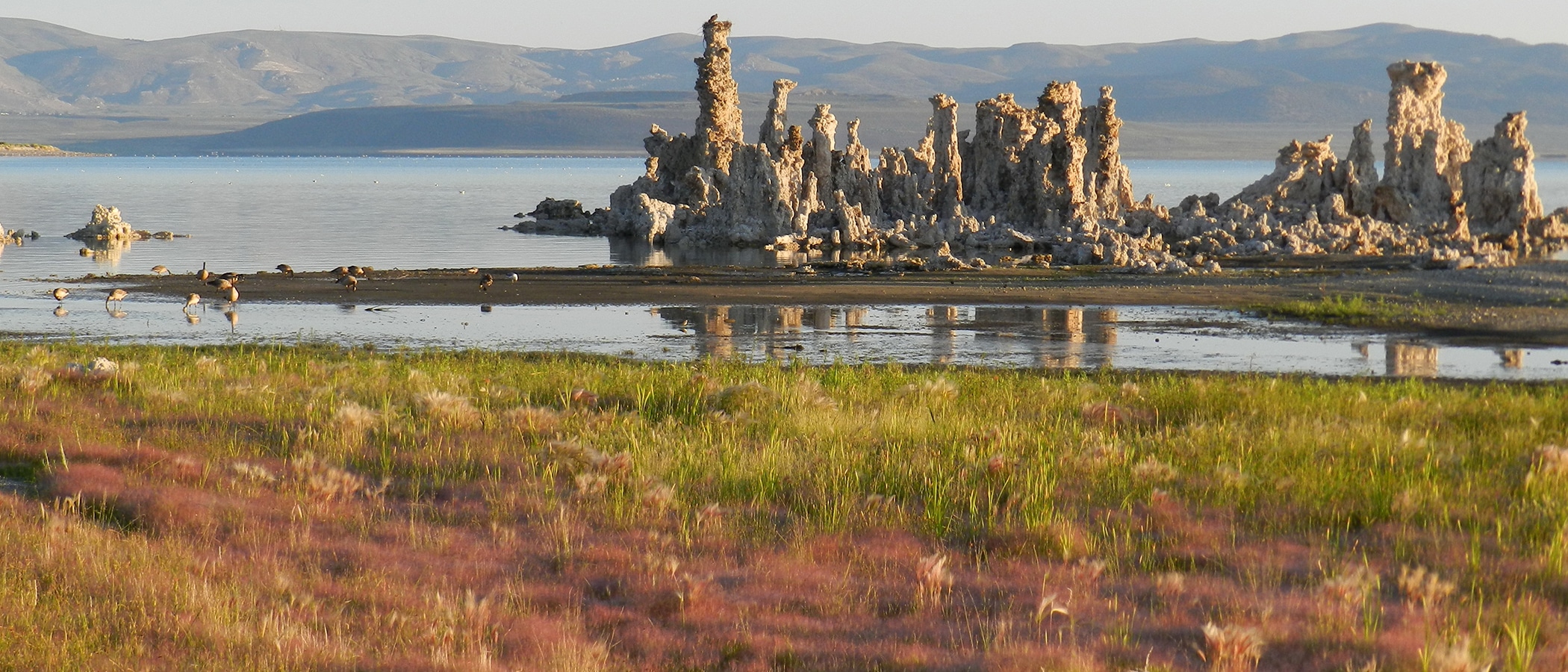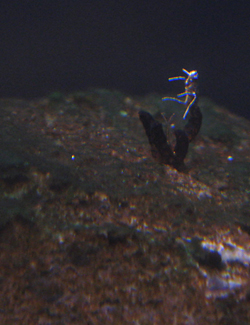

This post was written by Julia Runcie, 2010 Project Specialist.
Last Saturday a bit of excitement stirred up an otherwise uneventful afternoon at the Mono Lake Committee’s Information Center & Bookstore. I came out of the back office to find Rose, our store manager, standing riveted before the brine shrimp tank. “You have to see this!” she said. I peered into the tank. An alkali fly, its body glowing silver under the artificial light, was just emerging from a pupa case attached to a rock at the bottom of the tank. We watched transfixed as the fully-formed fly peddled its legs against the water, trying to find some purchase that would allow it to detach itself completely from the sticky case.
The life cycle of Mono Lake’s alkali flies (Ephydra hians) unfolds in three stages. First, the flies hatch as larvae from eggs laid underwater. After about three weeks, the larvae have developed enough to pupate. They attach themselves to a substrate (usually a rock or a piece of tufa), and encase themselves in a hard pupa shell, much as a caterpillar forms a chrysalis. Although the flies do not eat or move during the 1–3 weeks they spend as pupae, their bodies are busy metamorphosing into the adult form we see in incredible numbers along the shores of Mono Lake. In spite of their abundance, however, it is extremely rare to observe a fly actually passing from one life stage to the next: Bartshé, the Committee’s education director, said that in years of guiding tours at South Tufa, right in the midst of prime alkali fly habitat, he had never seen this process before.
After a while the fly’s legs started moving more slowly. It seemed to be stuck, unable to emerge fully from its pupa case. Alkali flies are able to trap pockets of air around their bodies and breathe underwater for a certain length of time, but this fly had already lasted for more than half an hour. Rose and I had started to feel attached to the fly, and we were worried that it might drown. But at this time of year there would be nothing for it to eat even if it did make it out of the tank, and we weren’t sure we really wanted a new office pet. While we debated what to do the fly stopped moving altogether. I grabbed a spoon and fished it out, pupa case and all. As soon as it was out of the water the fly began moving a little and eventually succeeded in detaching itself from the case. I left the spoon in the back office, and by the end of the day the fly was gone. Perhaps it’s hiding in some corner of the office, or perhaps it made its way outside. Wherever it ends up, I’m glad I was there to witness its extraordinary emergence.

Woah! I’m sorry I missed that. Must have been so cool to see, I’m jealous! I’m glad you wrote a monologue about it.
That’s fantastic! I visited the Information Center on Saturday, 10/23, and am saddened that I missed viewing the amazing transformation. Nonetheless, it’s always great to visit and immerse myself in the wonderful mono Lake spirit.